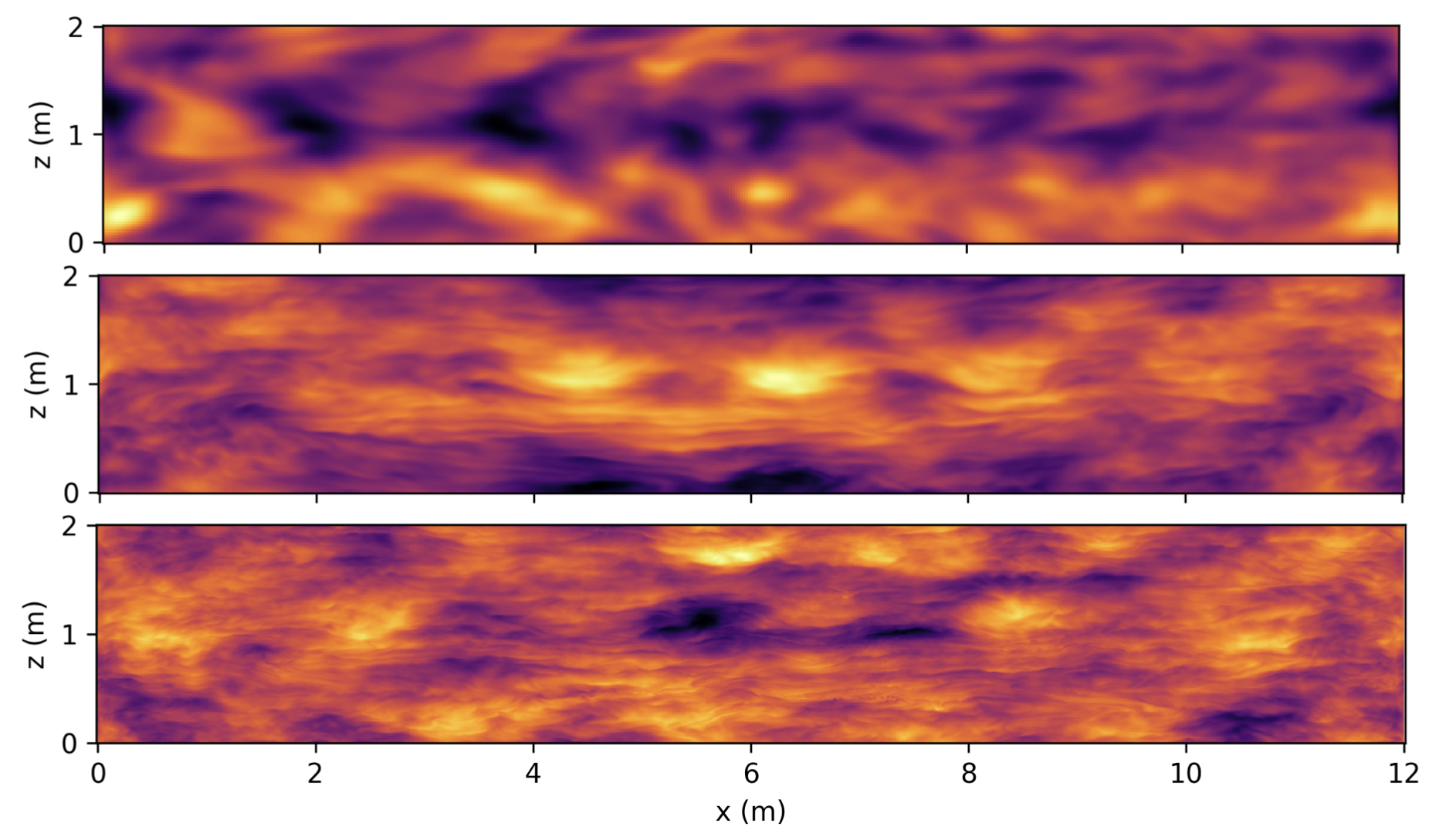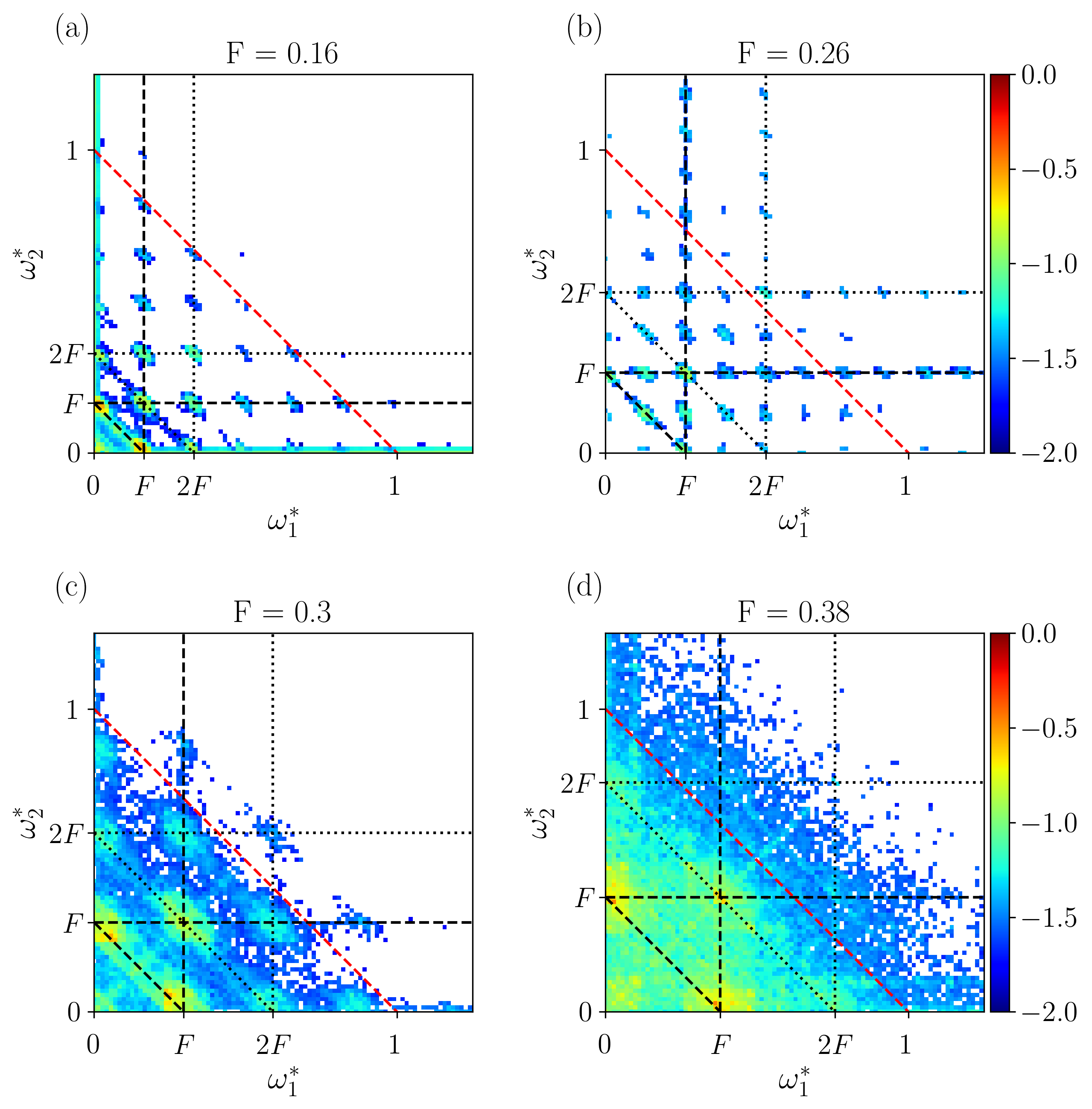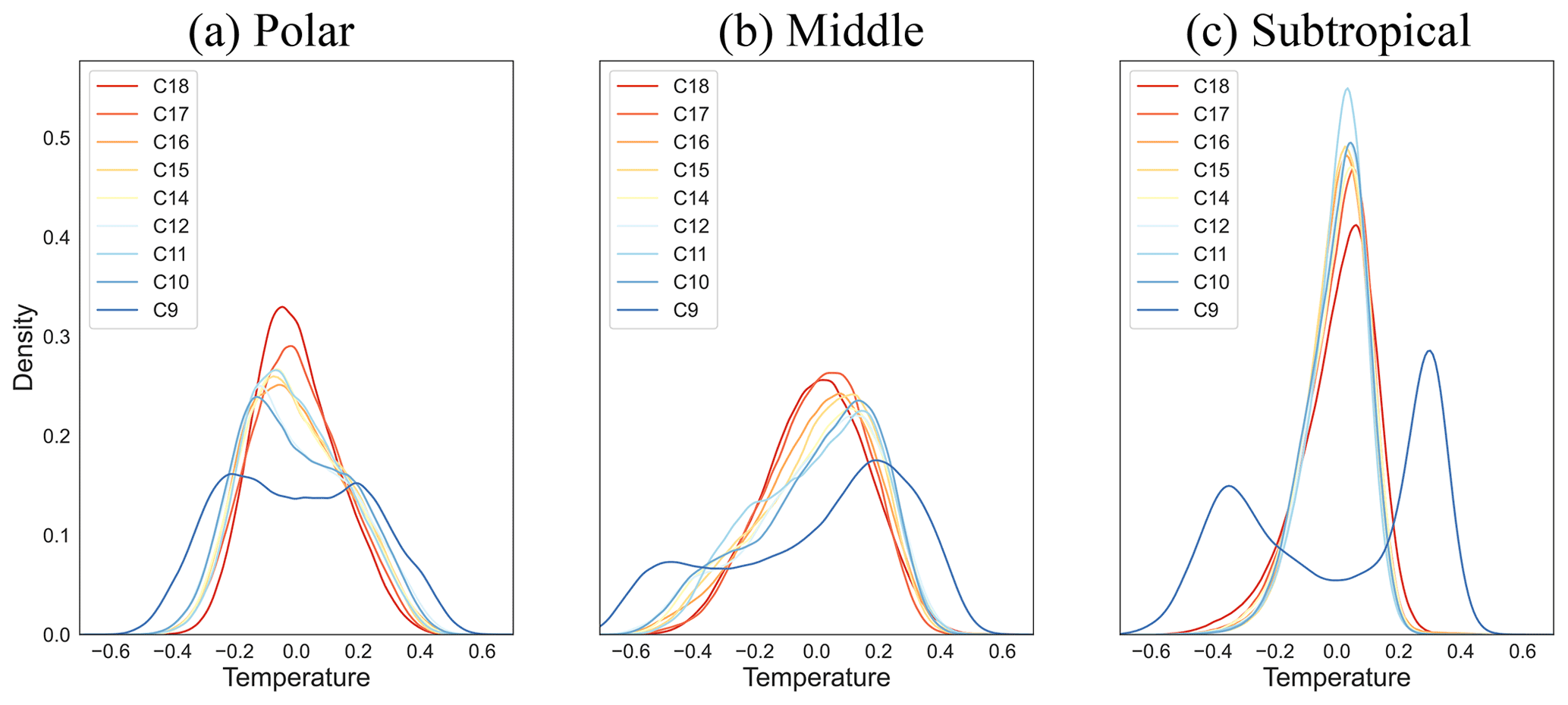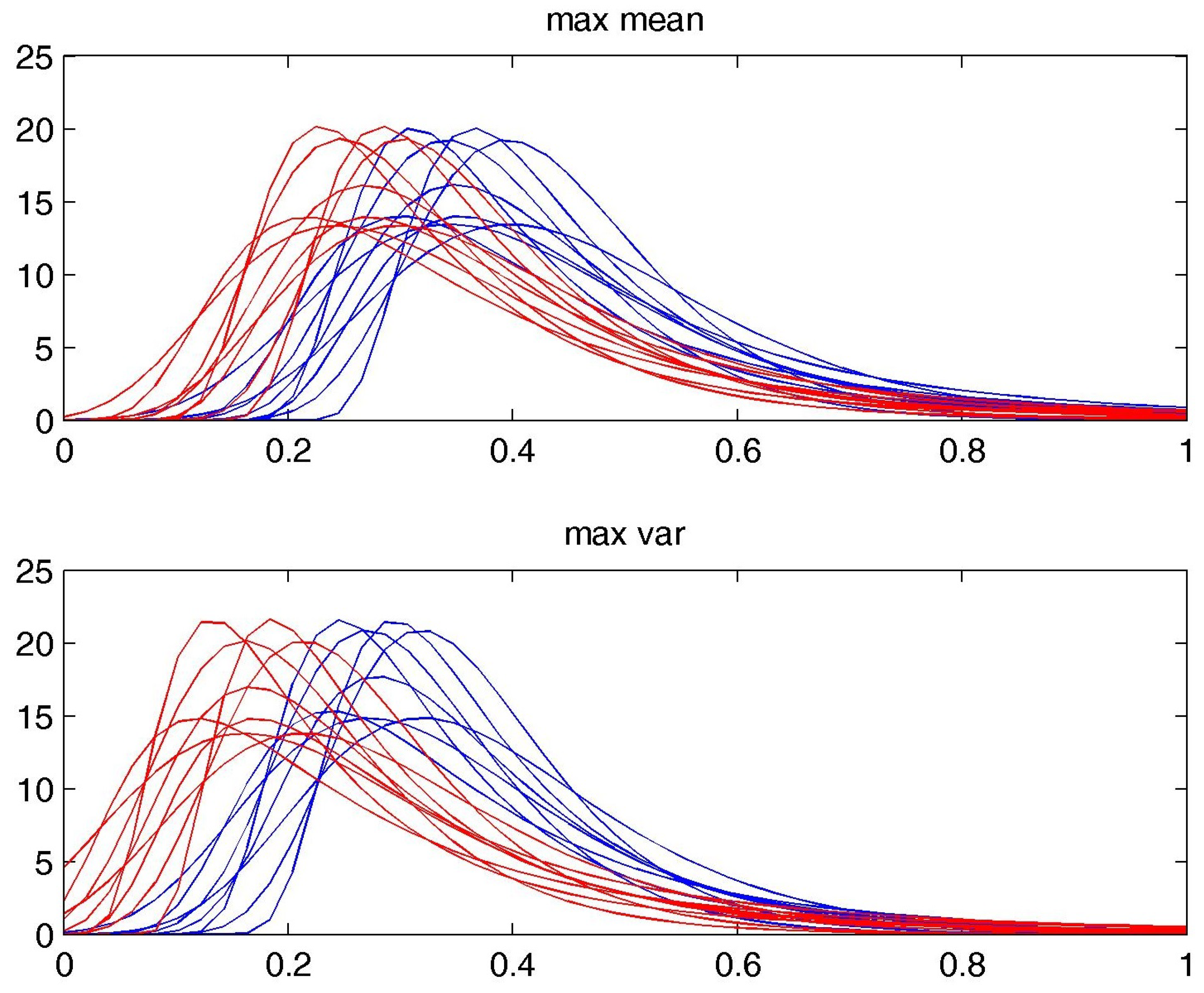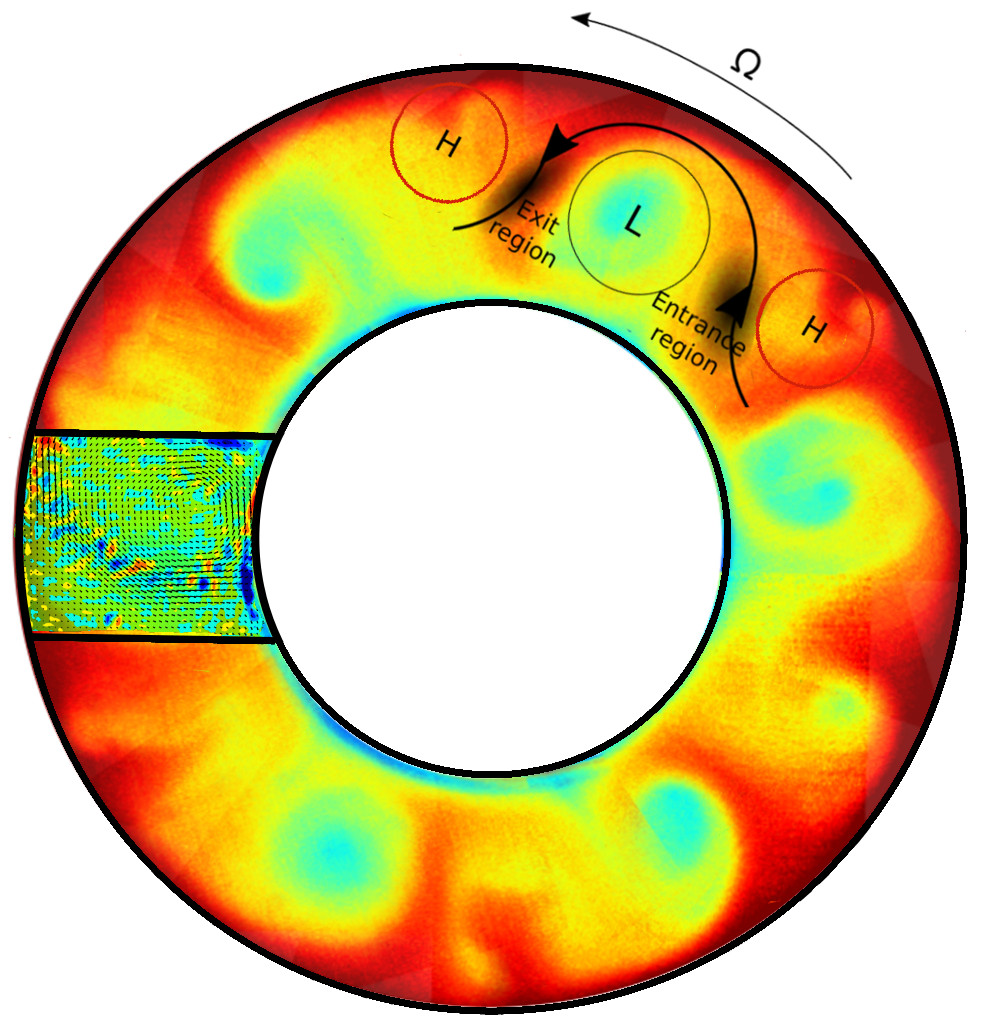Publications
Preprints
Fast and slow response modes in the ventilation of a living computer laboratory
Costanza Rodda, Graham Highes, and John Craske (2023). submitted to Building and Environment.
Our study is based on measurements taken in an instrumented computer laboratory classroom from which we develop a CO2 evolution analytical model for a multi-zone space that accounts for the parametrisation of inter- and sub-zonal mixing. The analysis of the model and data using dynamical system techniques highlights lower dimensional spaces that are representative of the leading processes in the system and the most relevant physical parameters.
Numerical study of experimentally inspired stratified turbulence forced by waves
Jason Reneuve, Clément Savaro, Géraldine Davis, Costanza Rodda, Nicolas Mordant, and Pierre Augier (2022). submitted to Physical Review Fluids.
doi: https://doi.org/10.48550/arXiv.2210.02855
Journal Articles
Experimental observations of internal wave turbulence transition in a stratified fluid
Costanza Rodda, Clément Savaro, Géraldine Davis, Jason Reneuve, Pierre Augier, Joël Sommeria, Thomas Valran, Samuel Viboud, and Nicolas Mordant (2022). Physical Review Fluids
doi: https://doi.org/10.1103/PhysRevFluids.7.094802
This paper studies the dynamical regimes experimentally developing in a stratified fluid forced by internal gravity waves in a pentagonal domain. We find that by changing the shape and increasing the dimensions of the domain finite-size effects diminish and wave turbulence is observed. In this regime, the temporal spectra decay with a slope compatible with the Garrett-Munk spectra. Different regimes appear by changing the forcing conditions, namely, discrete wave turbulence, weak wave turbulence, and strongly stratified turbulence. The buoyancy Reynolds number Reb marks well the transitions between the regimes, with weak wave turbulence occurring for 1<Reb<3.5 and strongly nonlinear stratified turbulence for higher Reb.
[Jet stream variability in a polar warming scenario–a laboratory perspective] (https://doi.org/10.5194/wcd-3-937-2022)
Costanza Rodda, Uwe Harlander, and Miklos Vincze (2022). Weather and Climate Dynamics
doi: https://doi.org/10.5194/wcd-3-937-2022
Does global warming affect the mid-latitude circulation? Numerical simulations are hampered by the complexity of feedback phenomena while with laboratory experiments we were able to isolate the main dynamics elements. Our results show that a progressive decrease of the meridional temperature difference slows down the eastward propagation of the jet stream and complexifies its structure. Temperature variability decreases which means that extreme events are milder but more frequent in a global warming scenario.
Probability Distribution of Extreme Events in a Baroclinic Wave Laboratory Experiment
Uwe Harlander, Ion Dan Borcia, Miklos Vincze, and Costanza Rodda (2021). Fluids
doi: https://doi.org/10.3390/fluids7080274
The Drake Passage opening from an experimental fluid dynamics point of view
Miklós Vincze, Tamás Bozóki, Mátyás Herein, Ion Dan Borcia, Uwe Harlander, Attila Horicsányi, Anita Nyerges, Costanza Rodda, András Pál and József Pálfy (2021). Scientific Reports
doi: https://doi.org/10.1038/s41598-021-99123-0
Transition from geostrophic flows to inertia-gravity waves in the spectrum of a differentially heated rotating annulus experiment.
Costanza Rodda and Uwe Harlander (2020). Journal of Atmospheric Science.
doi: https://doi.org/10.1175/JAS-D-20-0033.1
A long-standing question is what causes the -5/3 slope in the atmospheric spectra at the mesoscale: is it turbulence? Gravity waves? Something else?
In this work, we use a laboratory experiment-the differentially heated rotating annulus-to investigate the problem. Our experimental spectra show striking similarities to the atmospheric one. By separating the spectra into the vortex and wave component, it emerges that at the large-scale end of the mesoscale the gravity waves observed in the experiment cause a flattening of the spectra and provide most of the energy. At smaller scales, our data analysis suggests a transition towards a turbulent regime with a forward energy cascade up to where dissipation by diffusive processes occurs.
A new atmospheric-like differentially heated rotating annulus configuration to study gravity wave emission from jets and fronts.
Costanza Rodda, Steffen Hien, Ulrich Achatz, and Uwe Harlander (2019). Experiments in Fluids.
doi: https://doi.org/10.1007/s00348-019-2825-z
A new configuration of the classical baroclinic annulus experiment, recently built at the BTU laboratory, is presented in this paper. We called this experiment the “atmospheric-like” differentially heated rotating annulus for its characteristic aspect ratio that makes it more similar to the Earth’s atmosphere.
The first evidence of gravity waves emitted from the baroclinic jet is reported. The conditions for gravity wave emission and propagation in this particular experimental set-up are examined in detail with the support of comparable numerical simulations. It emerges that, due to the complex horizontal structure of the buoyancy frequency N, where the largest values occur along the baroclinic jet axis, the gravity waves in the experiment are observed to be trapped.
Baroclinic, Kelvin and inertia-gravity waves in the barostrat instability experiment
Costanza Rodda, Ion Dan Borcia, Patrice Le Gal, Miklos Vincze, and Uwe Harlander (2018). Geophysical and Astrophysical Fluid Dynamics.
doi: https://doi.org/10.1080/03091929.2018.1461858
We investigate a modified version of the classic baroclinic experiment–the barostrat experiment–in which a juxtaposition of convective and motionless stratified layers is created by introducing a vertical salt stratification.
The thermal convective motions are suppressed in a central region at mid-depth of the rotating tank, therefore double- diffusive convection rolls can develop only in thin layers located at top and bottom, where the salt stratification is weakest. For high enough rotation rates, the baroclinic instability destabilises the flow in the top and the bottom shallow convective layers, generating cyclonic and anticyclonic eddies separated by the stable stratified layer. Thanks to this alternation of layers resembling the convective and radiative layers of stars, the planetary’s atmospheric troposphere and stratosphere or turbulent layers at the sea surface above stratified waters, this new laboratory setup is of interest for both astrophysics and geophysical sciences.
PhD Thesis
Gravity wave emission from jet systems in the differentially heated rotating annulus experiment
Costanza Rodda (2020). Advised by: Uwe Harlander.


